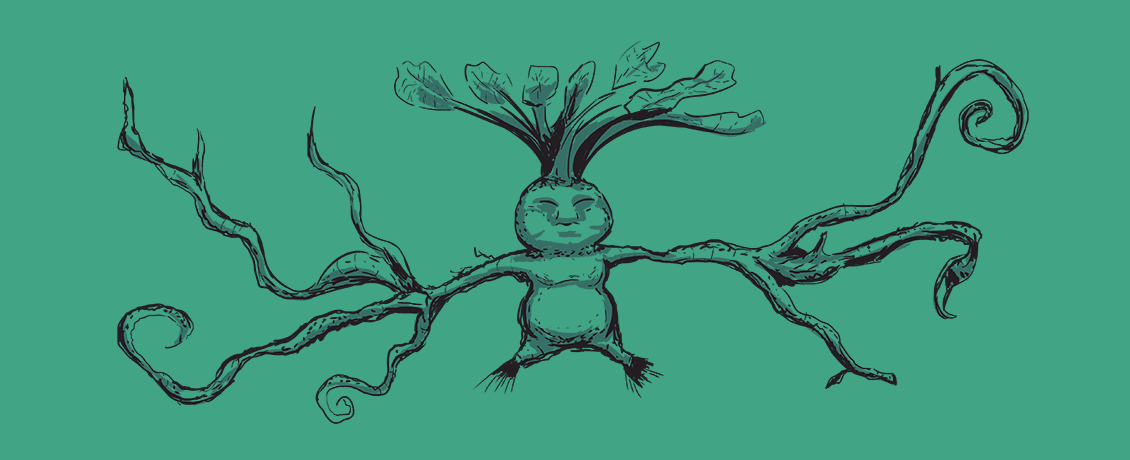Human-like plant that destroys and heals.
Mandrake Lore
 Illustration by @danaxbraga
Illustration by @danaxbraga
There is a mysterious plant, an occult thing, whose form resembles a small, shriveled human. This legendary zoophyte has awesome power – the power to destroy and to heal.
A kind of cord emerges from a root upon the ground, and to the cord is joined by the navel, as though it were a melon, an animal called the Yadu'a, but the Yadu'a is in all ways like men: face, body, hands, and feet. It uproots and destroys all thing all around, out to the limit of the cord. One must sunder the cord with an arrow, and then the animal dies.
The plant, known today as the Mandrake (or Mandragora), emits a piercing shriek when it is pulled from the ground. The scream of the Mandrake causes terrible misfortune, and has the power to drive those who hear it insane. Shakespeare mentions it in Romeo and Juliet, IV:3:
Where, for these many hundred years, the bones
Of all my buried ancestors are packed;
Where bloody Tybalt, yet but green in earth,
Lies festering in his shroud; where, as they say,
At some hours in the night spirits resort —Alack, alack, is it not like that I,
So early waking, what with loathsome smells,
And shrieks like mandrakes' torn out of the earth,
That living mortals, hearing them, run mad
Here I include the stanza before the reference to mandrakes because it connects to a superstition surrounding the creature's source. "Where, for these many hundred years, the bones / Of all my buried ancestors are packed;" brings to mind the stories of Sir Thomas Brown and Hanns Heinz Ewers which claim that the Mandrake grows in the ground underneath the gallows, and that its human form is a result of the blood, fat, urine, or semen dripping into the ground from the corpses above. In his novel Alraune (which is the German word for 'Mandrake'), Ewers explores and extends the legend by telling the tale of a girl born from a prostitute who is artificially inseminated with the semen of a hanged murderer.
The Mandrake brings death and madness, but it also possesses healing properties and can grant certain magical abilities. This duality is expressed by Pliny who believed that the white Mandrake was male and the black one female. It has been used as an anaesthesia for surgery, and to treat rheumatic pain, melancholy, convulsions, and mania. With the root of a Mandrake, proper alchemical prepartion could produce magical ointments of flight and psychic visions. In other cases, it was used as an amulet to grant good fortune or cure sterility. A curious reference to the generative properties of the Mandrake exists in the book of Genesis 30:14-16:
And Reuben went in the days of wheat harvest, and found mandrakes in the field, and brought them unto his mother Leah. Then Rachel said to Leah, Give me, I pray thee, of thy son's mandrakes.
And she said unto her, Is it a small matter that thou hast taken my husband? and wouldest thou take away my son's mandrakes also? And Rachel said, Therefore he shall lie with thee to night for thy son's mandrakes.
And Jacob came out of the field in the evening, and Leah went out to meet him, and said, Thou must come in unto me; for surely I have hired thee with my son's mandrakes. And he lay with her that night.
Written by Giles Ravensong.
